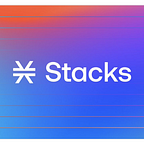Decentralized Finance on the Bitcoin Blockchain
When I think of DeFi I immediately think Ethereum and the many DeFi Dapps. Most of them built with Solidity smart contracts. Not until early 2019 did we see WBTC or RenBTC this year, making it possible to move Bitcoin liquidity onto the Ethereum blockchain.
Dapps running on the Ethereum Network/blockchain are built with Solidity smart contracts. These Solidity smart contracts are Turing complete. The vast majority of programming languages that exist are Turing complete. Look at the inherencies associated with Clarity and Solidity smart contract languages.
After doing a quick search, I found an article pointing out 16 known attack vectors that affect the security of Solidity smart contracts, which happens to be Turing complete.
Stacks 2.0 & Clarity smart contracts, optimizing for predictability and security. Clarity software language is Turing incomplete (just like Bitcoin), thereby, empowering engineers to build smart contracts that inherently avoid the aforementioned 16 attack vectors. Keep in mind that the number of attack vectors referenced was from a 2018 citation so there may be more as of 2020.
How does the Bitcoin blockchain strengthen and secure Stacks 2.0? A blockchain is as strong as it is secure. Proof of work blockchains like Bitcoin can undergo a 51% attack. That would mean that the 51% attacker (miner or group of colluding miners (a cartel)), could assemble more hashing power than all other mining participants. Hashing power is roughly proportionate to how much money a miner is willing to spend on engineering research, hardware, and electricity.
Let’s assume that Bitcoin is in a Bull Run and the price is $20,000/BTC. based on market supply, a 51% attack would then cost(assuming 18,000,000 BTC in circulation), $360,000,000,000 USD to perform a 51% attack on the Bitcoin blockchain, I think it’s safe to say that a 51% attack is not a threat so long as the Bitcoin price/market cap continues to rise, thus keeping the hashing power high. Another example shows the cost per hour to carry out a 51% attack.
To summarize, although I am not a developer, if what I read is correct, Clarity smart contracts, with their Turing incompleteness, appear to produce smart contracts that have less attack vectors and in the case of being built on the Bitcoin blockchain, will be utilizing the most massive hash power a PoW blockchain has to offer. Stacks 2.0 is on track for code completion by December 15th 2020 and expects to launch main net on January 14th 2021. We are all about to witness the awesomeness and empowering attributes of Stacks 2.0. Stay tuned!
Thanks for reading.
Disclaimer: This material should not be taken as the basis for making investment decisions, nor be construed as a recommendation to engage in investment transactions. I am simply sharing my perspective of specific technology used in building smart contracts.
